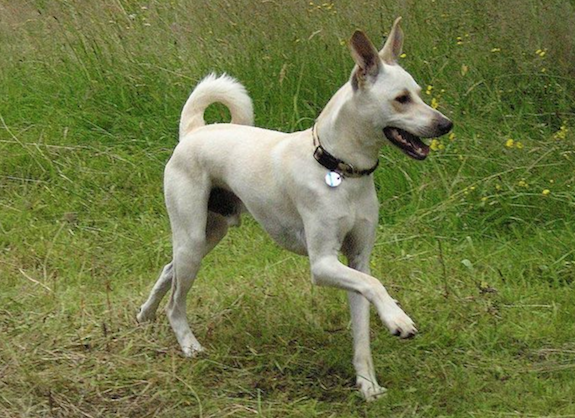
The oldest breed in the world: It may be a debate that is never definitively settled among cynologists possibly because there are more than a few candidates for the title. Certainly the Cretan Hound takes its place on the list. Many experts consider the Cretan to be the oldest European dog breed because its recorded history is believed to extend beyond 4,000 years.
The Cretan (nicknamed, “Ntopio”) was used as a hunting dog extensively by the Minoans, a Bronze Age Aegean civilization living on the largest and most populous of the Greek islands. That the breed is from Crete is intriguing because as trade routes go, Crete was a link between Europe, Africa, and Asia. Intriguing because many of this breed’s characteristics are found in other Mediterranean primitive breeds leading some experts to believe that the Cretan Hound may be the “big daddy” ancestor of them all.
Intriguing, but if this is the case, it’s not entirely surprising. As people began to travel and explore, the dog spread to other islands, and eventually to Greece and other European countries. It bred with local dogs, but in Crete, the Ntopio remained unchanged from what it was with the Minoans. This is known because in recent archaeological digs, a mural was found depicting dogs essentially indistinguishable from the modern Cretan hound. That said, the Minoans may have acquired the dog from Egypt where traders encountered the hounds and brought some home. There, the dogs adapted to island conditions.
The Cretan, considered to be a primitive breed, has some sighthound physical characteristics including hare feet, a long, neat muzzle with tight lips, and a lean frame. Its tail is always carried in a curve over or around the back, and its prick ears can move in any direction including folding back on themselves (something they typically do when chasing prey).

By Fainomenon – Own work, CC BY-SA 3.0, https://commons.wikimedia.org/w/index.php?curid=29895821
With its people, the dog is curious, but calm, affectionate, but also stubborn. When a Cretan Hound is chasing something, it’s next to impossible to call him off, so this is not a breed to take off leash in unfenced areas. Because of its strong prey drive, a Cretan Hound shouldn’t be trusted around non-canine pets. When hunting, watch out, rabbits. He is a persistent, deadly and relentless hunter who works both by sight and scent. Indeed, it’s said that a Cretan seems to literally suck the scent of the prey from the ground, follow the trail and flush out the critter out with tenacity. On the scent, a Cretan becomes rigid while his tail moves in circular fashion, a sign that the chase is about to begin. While hunting, the Cretan’s body language provides hints as to its progress.
Sadly, a new Greek draft law aimed at boosting animal welfare may have a devastating impact on rare, historic dog breeds in Greece like the Cretan Hound, and the forced sterilization clause has owners, hunters, veterinarians, and dog enthusiasts in up in arms in opposition. You can read more about this law in an article dated April 7, 2021 here. As of May, 2021, there were still protests which you can read about here. A simple on-line search will yield many more hits, just do a search on “Greek dog owners protest mandatory sterilization of pets.”
We’ve digressed. After the Cretan Hound was recognized by the Kennel Club of Greece in March, 2003, the club applied for recognition by the FCI. Until that happens, a Greek team of the Save Foundation looks after the breed in a conservation project for endangered breeds. To our knowledge, the only other country which currently recognizes the breed is Germany.
Watch thirty-nine seconds of some Cretan Hounds and pups:
Image of Cretan Hound found unattributed on Pinterest is happily credited upon receipt of information
